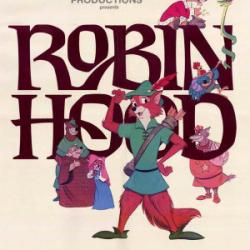 By Loriliai Biernacki
By Loriliai Biernacki
As we move into the 21st century, with a shrinking world, an entangled economy, and instantaneous communications with the other side of the planet, religious life is changing as well. Religious groups are able to meet the needs of adherents far away and minister to communities separated spatially from each other. For Hinduism, this has meant especially that a diasporic community has been able to reconnect with its roots far away. An engineer living in Denver, Colorado in the U.S. can offer a puja online at the famous temple for Venkateshwara and receive his or her prasad by mail from the temple in Tirupati. Hinduism is becoming global.
As a religion, historically Hinduism has been very much about place. Different deities are associated with different places lending traditional Hinduism a flavor of the local. As this shifts via a new internet interconnectivity, the local will move more toward the "glocal," a kind of proliferation of particularities, particular Gods, particular practices among communities that might have not ever had any access to these new, imported Hindu perceptions -- and at least for the West, beckoning a rich and strange metamorphosis. What this means for the future of Hinduism is a coming variety of permutations, only loosely aligned under the rubric of "Hinduism" -- which itself as a religious tradition, both in terms of the word "Hinduism" and of the practices associated with this word, has been for some decades understood to function as indeed a kind of generalized rubric, a placeholder for a somewhat diverse set of traditions associated with different saintly or charismatic figures and different deities. In this sense Hinduism is spreading and will continue to spread in the future all over the globe. However, it will spread in a way that leaves behind the proper name, the box that classifies it as "Hinduism" per se.
The careful cultural observer will recognize the traces Hinduism leaves. For instance, one can see this happening already with the phenomenon of yoga. Yoga is becoming increasingly a worldwide practice, no doubt particularized by a variety of modifications, as Raja Yoga, the Bihar School of Yoga, Iyengar yoga, Astanga yoga, with Indian-American cross-overs like Bikram's "hot yoga," and again, with more hybridized American variations such as Forrest Yoga, TriYoga, and Anusara Yoga. The roots of yoga are clearly Hindu, yet as it makes its way across the globe, its roots are obscured. It is becoming a pan-global phenomenon.
Likewise Hinduism's philosophical underpinnings -- the ideas of karma and rebirth, notably -- are increasingly pervading American consciousness, and this spread of ideas will increase in the future. As a case in point, a few months ago I chanced upon Lisa Miller's column in the widely read magazine Newsweek, where she opines that Americans are becoming Hindus ideologically. She tells us that an astounding number of Americans now believe in reincarnation. This conceptual, indeed cosmological, importation from Hinduism is seeping indelibly into the American psyche. Even a percentage of self-identified Christians have little difficulty incorporating this Hindu notion. Similarly, the word and concept of "karma" is so commonly parlayed in everyday conversation that its Hindu origins no longer even register, as the concept finds its way across wide ranges of socio-economic circles and in all sorts of milieus.
In some sense, the trace of Hinduism as it moves across the globe in the future is as a kind of meme, a conceptual and evolutionary hypothesis. As such, it proposes a restructuring of our old habits of thought. It functions as a representative of what the West with its Cartesian mastery of the world lacks. As meme, this spread of Hindu conceptual tenets augurs a more healing and soulful alternative to the mechanization of our lives, our bodies, our minds. It promises a relief from the heavy burden of a soulless capitalism, to what we find in classical Hindu philosophical texts described as the "Law of Fishes" (matsya nyaya), a cutthroat and unsatisfied material competition in the world.
Besides this, Hinduism as de-nominalized meme of our future is a prelude to a future that Hinduism is already comfortable with. Our own increasingly plural world might take some solace, find a steady ease in the Hindu comfort with the multiple -- multiple Gods, multiple practices, and simultaneous multiple ontological structures of monotheisms, monisms, polytheisms, and panentheisms. In this sense, the future of Hinduism suggests a kind of opening to a global world in a way that sidesteps the vision of a one-world government or one-world ideology. It proposes instead a world model without hegemonic center, linked by a thread of cosmology, multiplicity instanced as network, a seamless interconnectivity that echoes a conceptual cosmology from Hinduism's past into our own global and glocal future.




